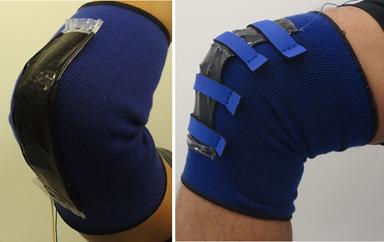The fast development of internet-of-things along with the negative environmental impact and short life span of convention power source, like, battery, increase the demand for self-powered sustainable portable electronics devices. Amongst others alternative energy sources, scavenging mechanical/ kinetic and vibrational energies is a viable option, which is abundant in our surrounding but generally wasted in daily life. Owing to high power output and relatively easy manufacturing process, nowadays, triboelectric generator (TrEG) has been gaining increasing amount of attention.
- Triboelectric effect, that is mainly considered as negative effect in electronics industries, uses contact electrification and electrostatic induction mechanism that occurs at the interface between two different materials to convert mechanical energy to electric signal.
- Wide range of triboelectric materials can be used to develop triboelectric generator.
- This technology can be used to harvest macro- and micro-scale energy harvesting. TrEGs have displaced great potential to power wearable electronics, health instruments and even for implantable biomedical systems, like pacemaker.
- TrEG can be implanted as self-powered active force/pressure motion sensor.
In EPFL-LMTS, we are addressing mainly on the design and development of vertical contact-separation mode and in-plane sliding mode soft triboelectric devices using cost effective materials and processes, compatible with large area and digital manufacturing. Our research is focusing on the three following themes.
Soft triboelectric generators for self-powered sensors and energy harvesting:
Our approach is based on soft materials for the triboelectric, electrodes and space/spring layers. PDMS, Dryflex, PU are used as triboelectric materials and the electrically conductive electrodes are made of carbon/elastomer composites. Elastomers provide softness and stretchability, and can be biocompatible. These films can be casted or printed over large area to realize fully elastomer generators in a simple and cost-effective way. The development process is scalable and provide improved conformability for the generators.
We have demonstrated wearable soft triboelectric devices with the energy harvesting capability from different human locomotion and gestures during the SNF-NanoTera BodyPowerSenSE project. For example, triboelectric shoe insole for harvesting energy while walking and running motion, and stretchable TrEG band that can be employed to harvest energy from different body joints movements. The generators can also be applied as self-powered force/pressure and motion sensors.
 Figure 1: Soft triboelectric power generators mounted on (left) elbow and (right) knee.
Figure 1: Soft triboelectric power generators mounted on (left) elbow and (right) knee.
Digital printing and additive manufacturing:
We are applying additive manufacturing, e.g., 3D-printing approach, to fabricate digitally triboelectric generators, investigating the printing of the triboelectric, spring, and electrodes layers. Our goal is to develop fully 3D printed triboelectric devices without the requirement of any assembly step, devices that could be, ultimately, integrated in the process flow to produce 3D-printed smart objects. The developed devices showed pressure sensing and energy harvesting capability and could be applied to self-powered tactile sensing.

Figure 2: 3D printed triboelectric tactile pad.
Fluid flow sensing and energy scavenging:
We are, in parallel, working on triboelectric devices to harvest energy from fluid kinetics. Different flexible and soft TrEGs have been designed, tube and bands, to convert wind and water flow energy.


Figure 3: (left) Triboelectric wind energy harvester, (right) Triboelectric water flow energy harvester.
Scientific publications
R. I. Haque, D. Briand, Triboelectric free-standing flapping films generator for energy harvesting from gas flow in pipes, Smart Materials and Structures, 28 (2019) 085002.
A. Marette, R. Haque, X. Ji, R. Hinchet, H. Shea, B. Briand, Triboelectric-TFT flip-flop for bistable latching of dielectric elastomer actuators, Adv. Electron. Mater. 2019, 1900205.
I. Haque, O. Chandran, S. Lani, D. Briand, Self-powered triboelectric touch sensor made of 3D printed materials, Nano Energy 52 (2018) 54–62; doi: 10.1016/j.nanoen.2018.07.038
R. I. Haque, P.-A. Farine, D. Briand, Soft triboelectric generators by the use of cost-effective elastomers and simple casting process, Sensors and Actuators A, 271 (2018) 88-95.